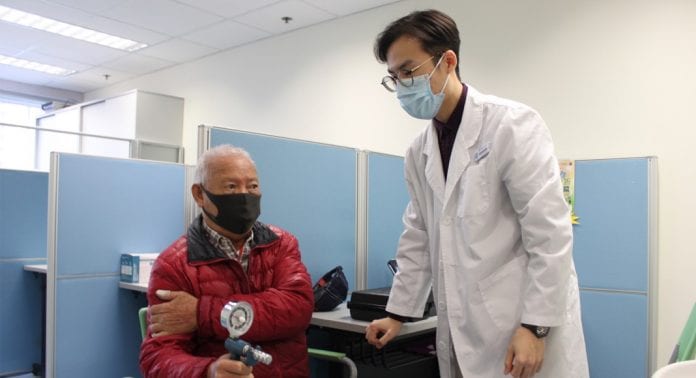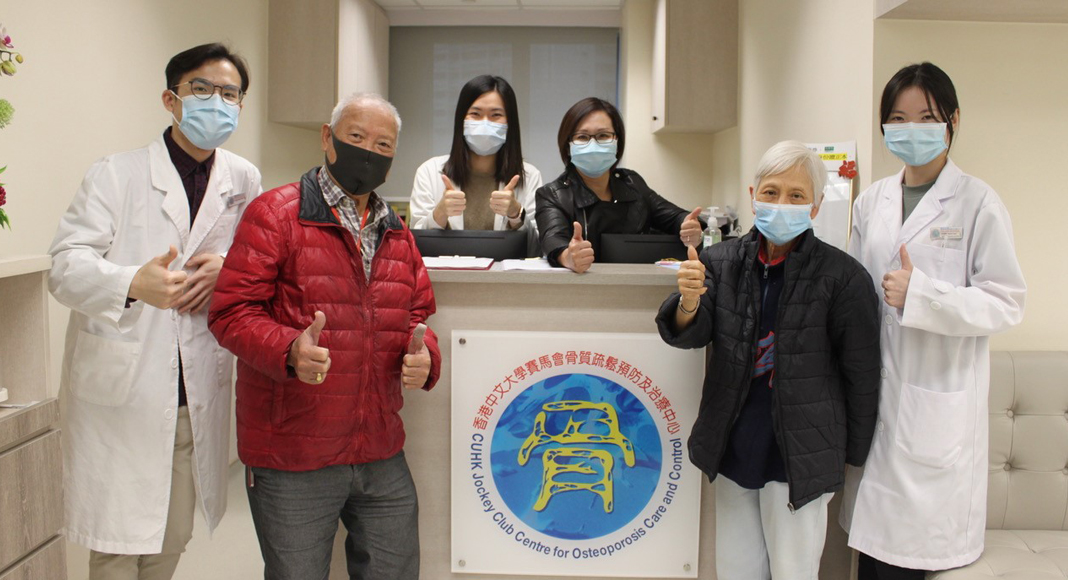
Professor Timothy Kwok of the Jockey Club Centre for osteoporosis care and control details the implications of treating a rapidly ageing population.
Population ageing is an important public health issue in Hong Kong. The average life expectancy in Hong Kong is among the highest in the world (81.9 years for men, and 87.6 years for women)1. The number of people aged over 80 years old will more than double from 0.38 million (5% of the total population) in 2019 to 0.94 million (11.6%) in 20392. It is of the utmost importance for older adults to be able to age healthily and independently.
Since 2001, we have been conducting a prospective cohort study of 4,000 men and women aged over 65 living within the community in Hong Kong (MrOs and MsOS Hong Kong study). In the first decade, our research focused primarily on examining the risk factors for osteoporotic fracture. Along with bone health, we have since also expanded our research interest in cognitive function, lifestyle and physical functioning of the older people. As technology has evolved, we have begun to include more objective measurements into our cohort in recent years.
At the year 14 follow-up (between November 2015 and November 2017), the use of Actigraph, a small wrist-worn device which continuously records movement, was introduced to our cohort. Over 650 subjects wore the accelerometer over the wrist for seven consecutive days in their daily life. The continuous measurement of body movement provided a wealth of information on activity across the full range of intensity, from sedentary behaviour to vigorous activity; as well as how these behaviours were accumulated.
We examined the association between physical activity and the one-year prospective fall risk, based on the data gathered by patients’ accelerometers. Not surprisingly, inactive people had significantly higher fall rates compared to people who were moderately active, because they were physically frailer. However, we have also observed a twofold increase in fall rate among people who were most active. Interestingly, upon separating the accumulative nature of physical activity, we found that bouted activity (physical activity accumulated in episodes of 10 minutes or more) contributed to this significant finding3. This indicates that engaging in activity accumulated over longer individual periods would also predispose older people to falls.
The important dimension of environmental factors has been factored into the year 14 follow-up, which considers influences such as indoor and outdoor air pollutants, green space, and building environment. Indoor air monitoring was carried out in 116 households twice in a year, one in summer and the other one in winter. Based on our cohort data, a PM2.5 prediction model for household of older adults in Hong Kong has been developed4. Our findings also found that incense burning, which is a common traditional religious ritual practised in Chinese culture among older people, significantly increased the indoor concentrations of PM2.5 and NO2; while extending window opening hours for ventilation would be substantially important to reduce pollutant concentrations5. Moreover, our team has developed a machine learning algorithm for indoor noise level detection, which may shed light on the long-term health effects of noise pollution in the home environment (this data is as yet unpublished).

Given the rapid ageing population worldwide, the World Health Organization (WHO) has highlighted the importance of shifting the focus from traditional disease treatment to monitoring the trajectories of intrinsic capacity of the elderly6. As the average age of our cohort has advanced to 86 years in 2019, we intend to continue our cohort study as one to examine the determinants of healthy ageing in the ‘old-old’: patients aged over 80. The year 16 follow-up is ongoing. In this follow-up, the spouses of subjects in the original cohort and additional subjects older than 80 are being recruited to enrich this cohort. Together with the examination of intrinsic capacity, continuous physical activity monitoring and environmental measurement, we believe this ‘old-old’ cohort would provide opportunities to explore the personal and external factors, and their interactions that modify the process of healthy ageing.
References
1 Healthy HK (Department of Health, Government of Hong Kong SAR). HealthyHK – Public Health Information and Statistics of Hong Kong – Life Expectancy. https://www.healthyhk.gov.hk/phisweb/en/
healthy_facts/health_indicators/life_exp/. Published 2019. Accessed December 3, 2020.
2 Hong Kong Special Administrative Region, Census and Statistics Department. Hong Kong Population Projections 2020-2069. www.censtatd.gov.hk. Published 2020. Accessed December 3, 2020.
3 Lu Z, Lam FMH, Leung JCS, Kwok TCY. The U-Shaped Relationship Between Levels of Bouted Activity and Fall Incidence in Community-Dwelling Older Adults: A Prospective Cohort Study. J Gerontol A Biol Sci Med Sci. 2020;75(10):e145-e151. doi:10.1093/gerona/glaa058
4 Tong X, Ho JMW, Li Z, et al. Prediction model for air particulate matter levels in the households of elderly individuals in Hong Kong. Sci Total Environ. 2020;717:135323. doi:10.1016/j.scitotenv.2019.135323
5 Tong X, Wang B, Dai WT, et al. Indoor air pollutant exposure and determinant factors controlling household air quality for elderly people in Hong Kong. Air Qual Atmos Heal. 2018;11(6):695-704. doi:10.1007/s11869-018-0576-2
6 WHO. World report on ageing and health 2015. https://www.who.int/ageing/events/world-report-2015-launch/en/. Published 2015. Accessed December 4, 2020.
Professor Timothy Kwok
The Chinese University of Hong Kong
+852 3505 3145
tkwok@cuhk.edu.hk
www.jococ.org/en/
This article is from issue 16 of Health Europa. Click here to get your free subscription today.









